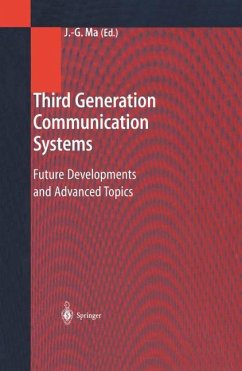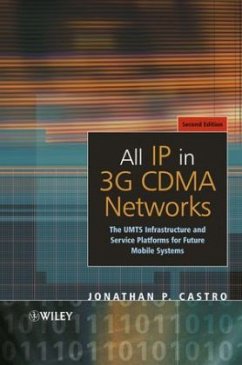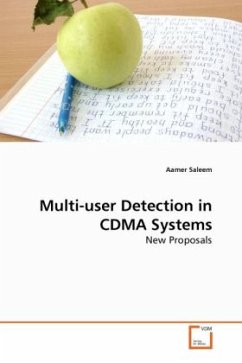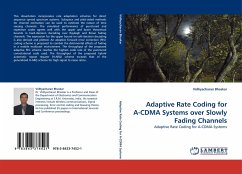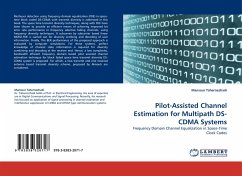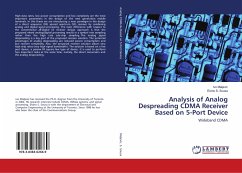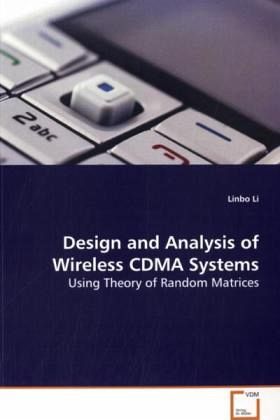
Design and Analysis of Wireless CDMA Systems
Using Theory of Random Matrices
Versandkostenfrei!
Versandfertig in 6-10 Tagen
45,99 €
inkl. MwSt.

PAYBACK Punkte
23 °P sammeln!
CDMA based cellular systems have been widely deployedand CDMA is selected as the air interface ofthird-generation (3G) cellular system (W-CDMA,cdma2000, TD-SCDMA). With the exponential growth rateof demand, understanding the principles of design andanalysis of large CDMA systems has become more andmore vital for both receiver designers and networkoperators. However, for large networks, receiversutilizing advanced signal processing techniques havecomplexity that scales with the system size.Furthermore, performance analysis of large systemsquickly becomes analytically intractable. With theapplic...
CDMA based cellular systems have been widely deployed
and CDMA is selected as the air interface of
third-generation (3G) cellular system (W-CDMA,
cdma2000, TD-SCDMA). With the exponential growth rate
of demand, understanding the principles of design and
analysis of large CDMA systems has become more and
more vital for both receiver designers and network
operators. However, for large networks, receivers
utilizing advanced signal processing techniques have
complexity that scales with the system size.
Furthermore, performance analysis of large systems
quickly becomes analytically intractable. With the
application of the mathematical theory on random
matrices, this book studies the problems of
low-complexity multiuser receiver design and
performance analysis (both information-theoretic and
uncoded) for various CDMA systems in the large system
regime. This book should be of great interest to
researchers and practicing engineers in wireless
communication. In addition, as this book explores the
exciting cross discipline of random matrices and
wireless communication, it will also be useful for
mathematicians wishing to see how advanced
mathematics shape today s engineering practice.
and CDMA is selected as the air interface of
third-generation (3G) cellular system (W-CDMA,
cdma2000, TD-SCDMA). With the exponential growth rate
of demand, understanding the principles of design and
analysis of large CDMA systems has become more and
more vital for both receiver designers and network
operators. However, for large networks, receivers
utilizing advanced signal processing techniques have
complexity that scales with the system size.
Furthermore, performance analysis of large systems
quickly becomes analytically intractable. With the
application of the mathematical theory on random
matrices, this book studies the problems of
low-complexity multiuser receiver design and
performance analysis (both information-theoretic and
uncoded) for various CDMA systems in the large system
regime. This book should be of great interest to
researchers and practicing engineers in wireless
communication. In addition, as this book explores the
exciting cross discipline of random matrices and
wireless communication, it will also be useful for
mathematicians wishing to see how advanced
mathematics shape today s engineering practice.



